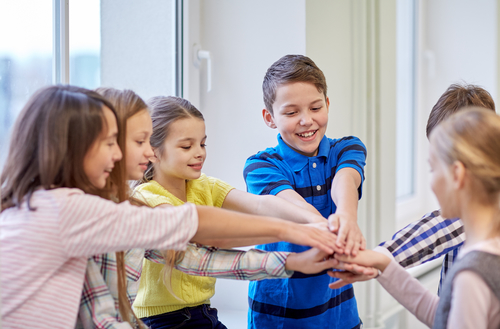
A responsive classroom is not an individual curriculum model, but an approach to teaching. This classroom model is based on the idea that creating a positive atmosphere in the school community enables students to learn better. By dedicating time and energy to building community and promoting social-emotional growth, the responsive classroom approach minimizes behavioral problems, thus allowing teachers to cover more material, and students to learn better.
According to responsiveclassroom.org, “the responsive classroom approach to teaching emphasizes academic, social and emotional growth in a strong school community”. Those who want to implement this approach have to dedicate a lot of time at the beginning of the school year to promoting this growth and building community. To be academically successful, students need to have the social skills to communicate properly with their peers and teachers. Fostering these skills requires educators to speak to students in the right way, set a positive tone and allow them to make meaningful choices. In a responsive classroom, children have much more agency than in a traditional classroom. They can choose what they want to learn. With a list of goals that need to be accomplished, students can choose the order and style in which they complete tasks, while teachers are free to walk around, facilitate and support students.
A lot of the hard work for an educator is when you are fist implementing the responsive classroom method. Teachers have to enable students to feel a sense of belonging and emotional safety. That can only come from deliberate facilitation of sharing and empathy on a regular basis. The learning space needs to be calm and organized, which requires an initial system as well as daily enforcement and maintenance. In order to be successful, every educator needs to be part of a supportive faculty. It is not enough to know the material, the responsive classroom teacher must also know the students well.
One of the foundations of a successful responsive classroom is the morning meeting. This is a time for students to share with their classmates. They can play games, share, and do group activities, which help build empathy and encourage collaboration. This is a time when students learn effective communication techniques such as making eye contact and shaking hands. Morning meeting gives teachers the opportunity to check-in with the class and make sure all of the students are emotionally prepared for the day ahead. Activities which deliberately require students to engage with their peers help build a rapport, which is the foundation of the classroom management strategy in the responsive classroom.
One of the foundations of this approach to learning is the belief that emotionally-healthy children are able to focus and learn better. The morning meeting establishes healthy relationships amongst the students and teaches them effective communication, which they can use when a conflict arises during the school day. By giving students the “basic human needs of safety and belonging”, the morning meeting saves more time than it takes by minimizing the need for behavior managemnet throughout the day. In the long run, it is worth the investment because teachers spend significantly less time on discipline, which leaves significantly more time for covering the material.
The responsive classroom approach sees school as a safe space which is meant to nurture the whole child. Academic success is still highly valued, with the belief that a strong sense of community and proper social-emotional development allows students to put their best feet forward when it comes to learning. The better we educate the whole child, the better chance they have of succeeding in school and beyond.
